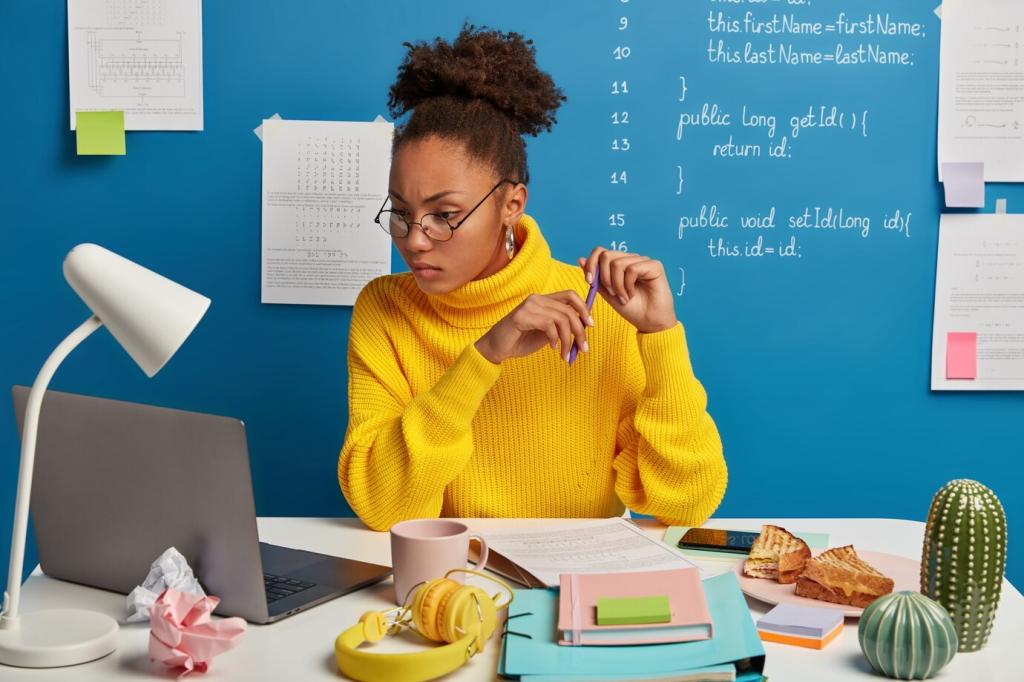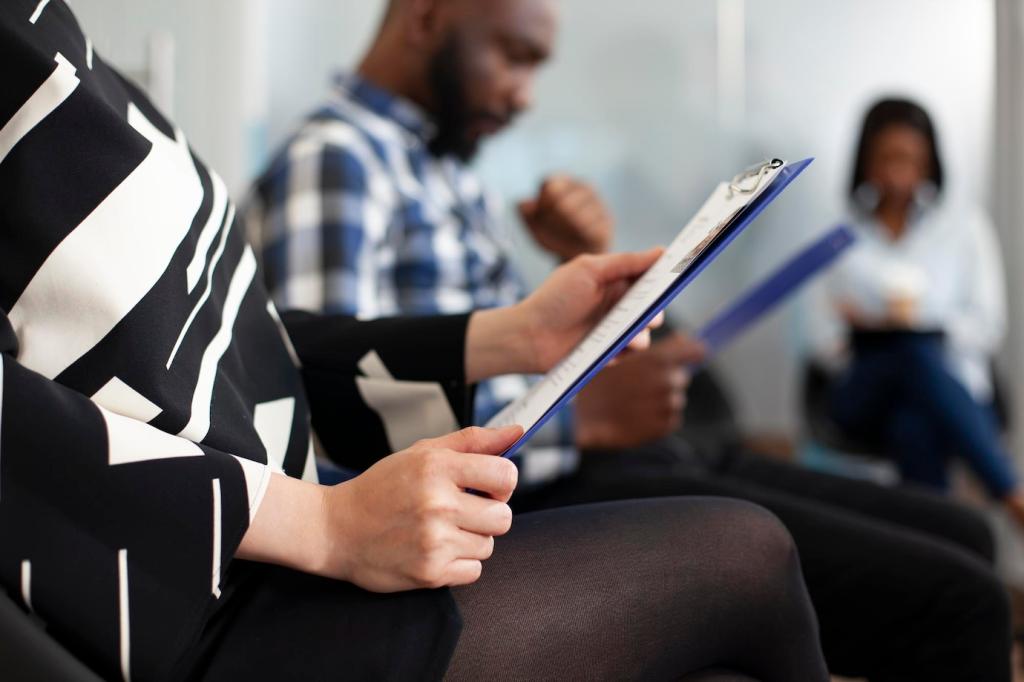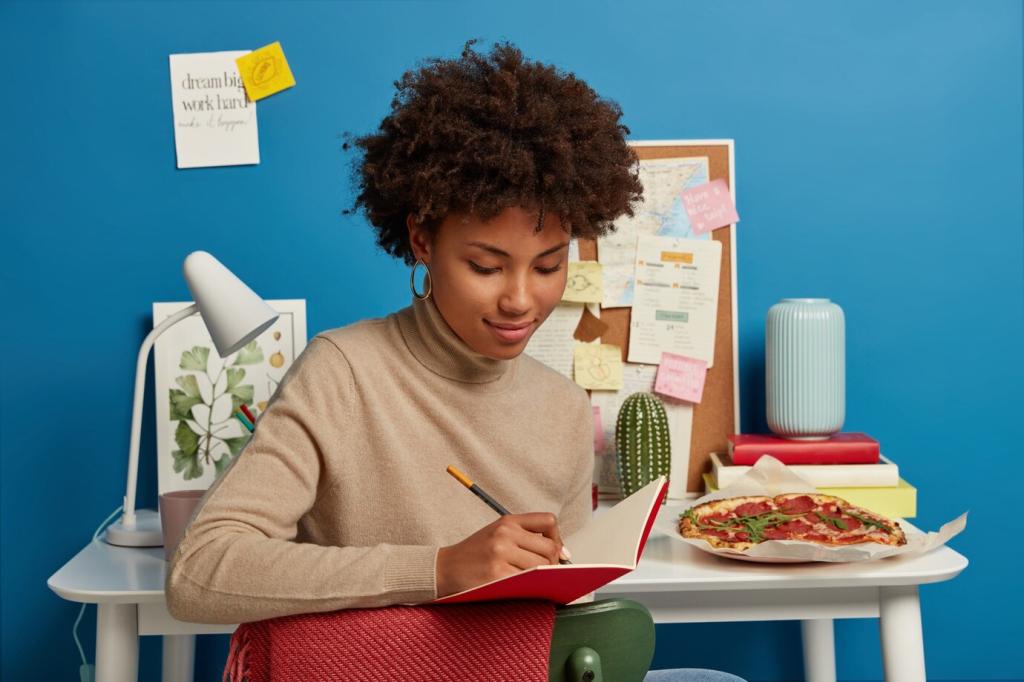Exploring Simple Art Therapy Techniques
Today’s theme: Exploring Simple Art Therapy Techniques. Welcome to a warm, creativity-first space where small, playful practices help you breathe easier, feel grounded, and reconnect with your inner storyteller. Join us, sketch fearlessly, and share what you discover.
Colors, lines, and the brain
When you choose a color and pull a steady line across paper, your attention rests in the present. Studies suggest creative focus can ease stress and support regulation, especially when the goal is exploration, not perfection.
Process over product
Simple art therapy emphasizes how creating feels rather than how it looks. By letting marks wander, you soften self-judgment, discover personal symbols, and develop a kinder inner voice that supports everyday resilience.
A tiny story from a lunch break
Lily kept a pocket notebook at work. For five minutes daily, she shaded small squares from pale to deep blue. Weeks later, she noticed fewer afternoon headaches, and she began inviting coworkers to color beside her.


This is the heading
Lorem ipsum dolor sit amet, consectetur adipiscing elit. Ut elit tellus, luctus nec ullamcorper mattis, pulvinar dapibus leo.

This is the heading
Lorem ipsum dolor sit amet, consectetur adipiscing elit. Ut elit tellus, luctus nec ullamcorper mattis, pulvinar dapibus leo.
Technique: Color Breathing with Pastels or Crayons
Step-by-step flow
Choose a calming color. Inhale and draw a slow arc; exhale and shade gently beneath it. Repeat for two to five minutes. Switch colors when your breath asks for a change, letting gradients form naturally.
A brief anecdote
During a stormy evening, Marco layered soft greens while counting his breaths. The page grew like a quiet forest. When thunder cracked, he traced a firm horizon line and felt steadier, as if the paper held the sky.
Helpful variations
Try warm-to-cool gradients, circular breaths that spiral outward, or a companion practice with a friend over video. Share a photo afterward and describe one sensation you noticed while moving color across the page.
Technique: Five-Minute Emotion Doodles
Time-box five minutes. Write a feeling at the top—curious, tired, hopeful—and let your hand move without lifting. Loops, dots, and zigzags become a visual weather report you can actually read.
Technique: Five-Minute Emotion Doodles
Halfway through, pause to name shapes you see: waves, fences, constellations. Add a small nudge—thicker lines for strength, softer shading for comfort. You are practicing emotional literacy with ink and breath.
Technique: Five-Minute Emotion Doodles
Post your doodle and caption it with three words describing its mood. Invite a friend to respond with colors they would add. Small exchanges build connection and normalize talking about inner weather kindly.
Technique: Collage of Strengths
Flip through magazines, packaging, or printed notes. Tear out textures, headlines, and colors that feel supportive. Trust instinct over logic; your hands often choose what your mind needs to remember.



Technique: Nature Rubbings and Texture Hunts
On a short walk, look for contrasting surfaces—bark, brick, metal grates. Listen for a rhythm in footsteps, then capture it as repeating lines. Curiosity turns the world into your sketchbook.
Technique: Nature Rubbings and Texture Hunts
Place paper over a leaf or coin. Hold your pencil sideways and stroke lightly. Increase pressure gradually until the pattern appears. Layer multiple rubbings to create a patchwork of found textures and memories.
Make It a Gentle Habit
Pick a cue you already do—morning tea, closing your laptop, or washing hands. Add a two-minute art moment right after. The predictable pairing helps your brain show up without negotiation.


Make It a Gentle Habit
On your page’s corner, note a quick check-in—energy, tension, or gratitude. Over time, look for patterns. Celebrate participation rather than output, and watch your practice become a reliable friend.
